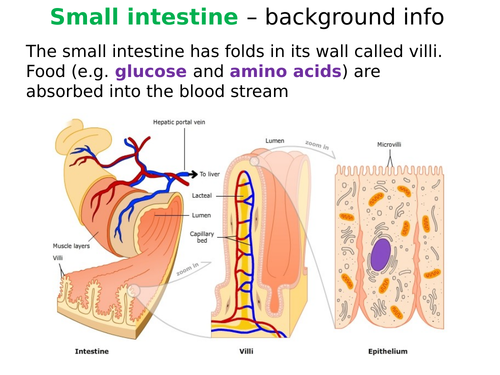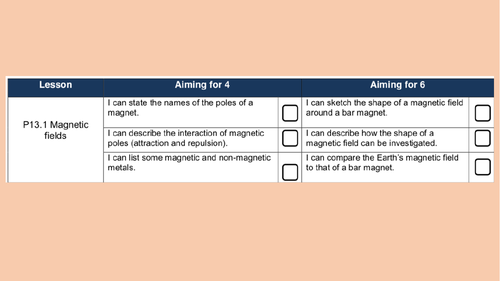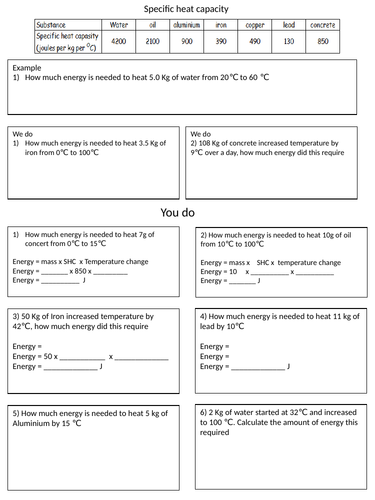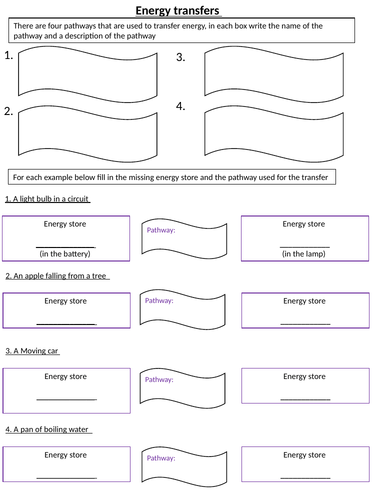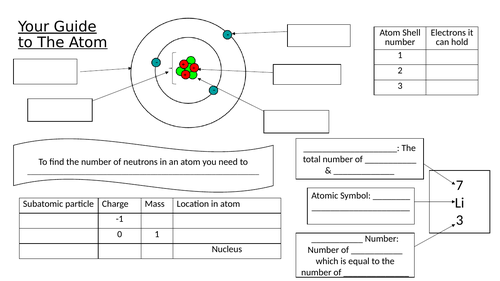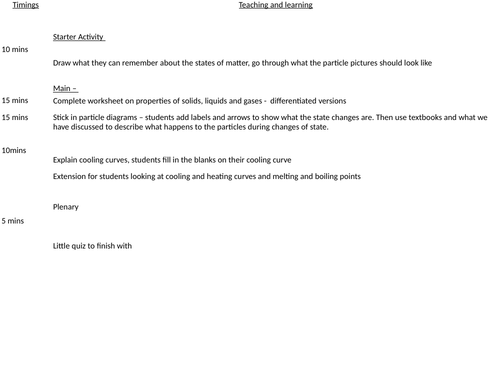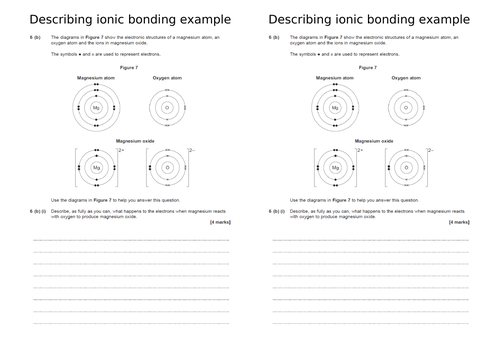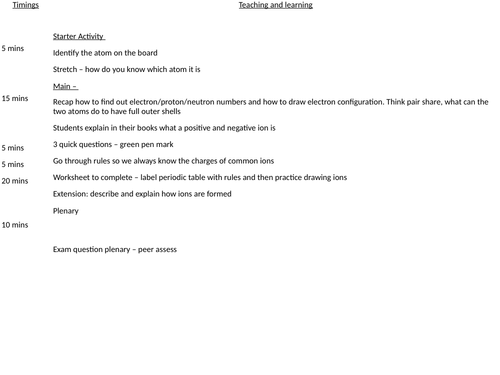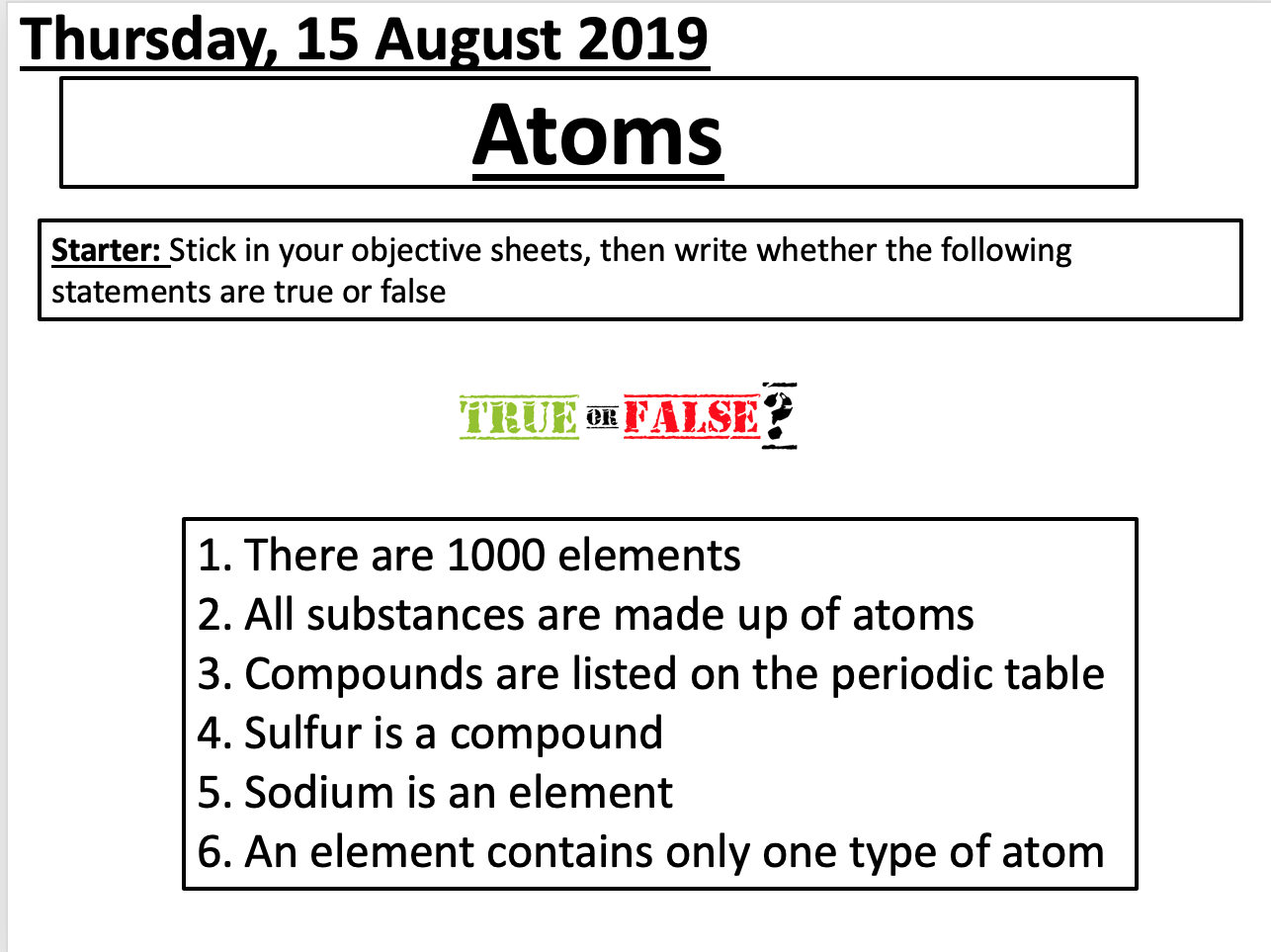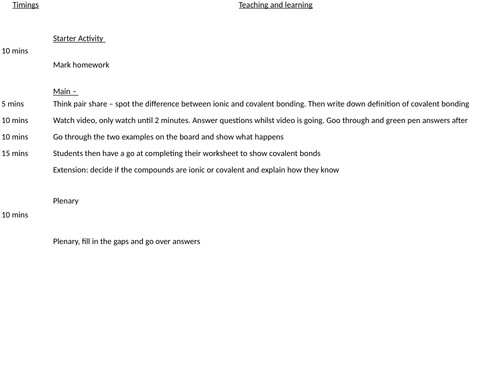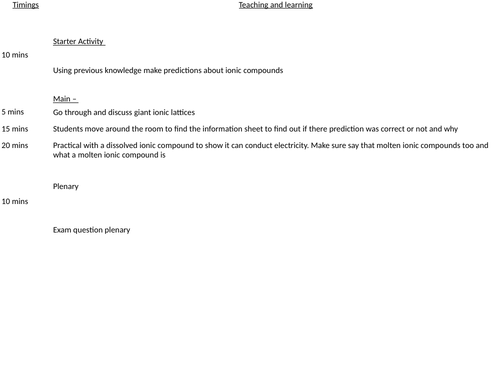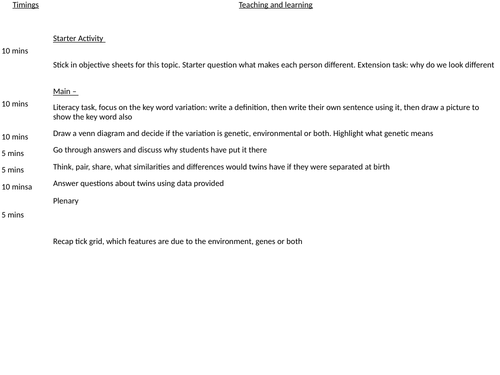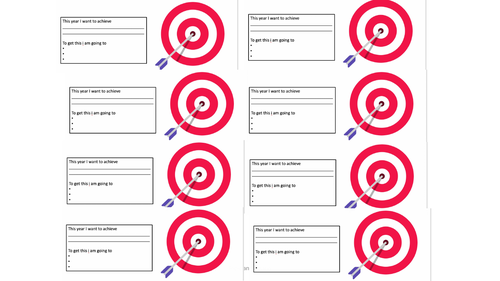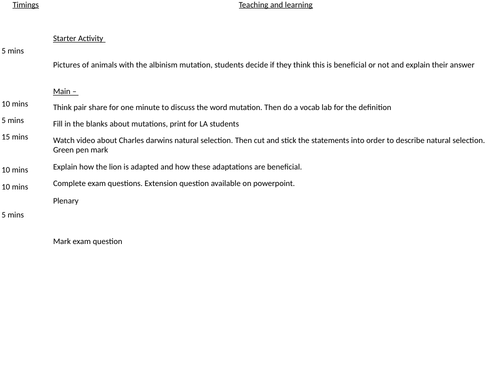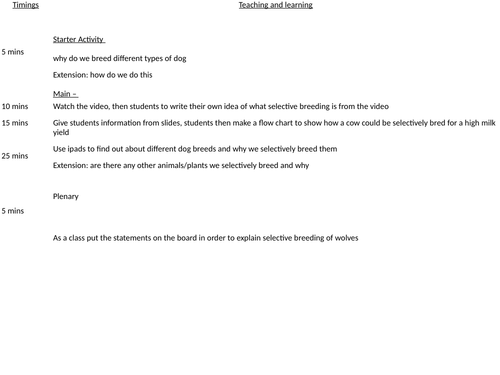
124Uploads
36k+Views
9k+Downloads
All resources

B1.10 exchanging materials
Aimed at mixed ability year 9 class
Starter: discuss surface area practical from diffusion lesson
Main: Explain surface area: vol and practice how to work it out
research how different multi cellular animals are adapted
extension: kerboodle checkpoint follow up level 4/6/8
plenary: what have they learnt today

P13.1 Magnetic Fields
P13.1 accordin to AQA Kerboodle
Aimed at a low ability foundation class (targets level 4)
Stater: pictures to guess the title
Main: practical element to find out what poles of magnets do. Then to use iron fillins/compasses to show field lines. can be demoed
Work sheet to consolidate knowledge with an extension on induced/permanent magnets
Plenary: true/false questions based on content from the lesson

Energy transfers
Simple worksheet to show energy transfers and diagrams. Aimed at year 7 students, could be used for lower ability older students.
A Higher and lower ability version.

C1.6 structure of the atom
aimed at a mixed ability year 9 class
Starter Activity
Put atom structures in the correct order thinking back to last lesson
Main –
Work through work sheet in steps. To ensure maximum understanding
Chase the element – race task to find out what each element around the room is, identifying proton neutron and electron number and matching it with an element on the periodic table
Make a model of an atom using string, and card (cut card into circles use string to attach them together)
Plenary
Tweet what you’ve learnt tday

C3.1 States of matter - Foundation
Aimed at a foundation class
Starter Activity
Draw what they can remember about the states of matter, go through what the particle pictures should look like
Main –
Complete worksheet on properties of solids, liquids and gases - differentiated versions
Stick in particle diagrams – students add labels and arrows to show what the state changes are. Then use textbooks and what we have discussed to describe what happens to the particles during changes of state.
Explain cooling curves, students fill in the blanks on their cooling curve
Extension for students looking at cooling and heating curves and melting and boiling points
Plenary
Little quiz to finish with

C3.3 Ionic bonding - foundation
Aimed at a lower ability class
Starter Activity
Ions recap, what charge do elements have in different groups
Stretch question to think about how group 1 and 2 will interact with group 6 and 7
Main –
Go through the video and answer the questions, go through answers
Practice drawing ionic compounds Extension: explain the difference between KBr and K2O
Go through the answers which are on the slides
Exam question practice to move onto if have a chance
Plenary
4 mark exam question – peer assess
Good to show the detail they need in their answers

C3.2 atoms into ions - Foundation
aimed at a lower ability class
Starter Activity
Identify the atom on the board
Stretch – how do you know which atom it is
Main –
Recap how to find out electron/proton/neutron numbers and how to draw electron configuration. Think pair share, what can the two atoms do to have full outer shells
Students explain in their books what a positive and negative ion is
3 quick questions – green pen mark
Go through rules so we always know the charges of common ions
Worksheet to complete – label periodic table with rules and then practice drawing ions
Extension: describe and explain how ions are formed
Plenary
Exam question plenary – peer assess

C3.5 covalent bonding - foundation
aimed at a lower ability class
Starter Activity
Mark homework
Main –
Think pair share – spot the difference between ionic and covalent bonding. Then write down definition of covalent bonding
Watch video, only watch until 2 minutes. Answer questions whilst video is going. Goo through and green pen answers after
Go through the two examples on the board and show what happens
Students then have a go at completing their worksheet to show covalent bonds
Extension: decide if the compounds are ionic or covalent and explain how they know
Plenary
Plenary, fill in the gaps and go over answers

C3.4 Giant ionic structures - foundation
aimed at a lower ability class
Starter Activity
Using previous knowledge make predictions about ionic compounds
Main –
Go through and discuss giant ionic lattices
Students move around the room to find the information sheet to find out if there prediction was correct or not and why
Practical with a dissolved ionic compound to show it can conduct electricity. Make sure say that molten ionic compounds too and what a molten ionic compound is
Plenary
Exam question plenary

B13.1 variation and evolution
Aimed at a low ability class.
Starter Activity
Stick in objective sheets for this topic. Starter question what makes each person different. Extension task: why do we look different
Main –
Literacy task, focus on the key word variation: write a definition, then write their own sentence using it, then draw a picture to show the key word also
Draw a venn diagram and decide if the variation is genetic, environmental or both. Highlight what genetic means
Go through answers and discuss why students have put it there
Think, pair, share, what similarities and differences would twins have if they were separated at birth
Answer questions about twins using data provided
Plenary
Recap tick grid, which features are due to the environment, genes or both

B13.2 Evolution by natural selection
Aimed at a low ability class
Starter Activity
Pictures of animals with the albinism mutation, students decide if they think this is beneficial or not and explain their answer
Main –
Think pair share for one minute to discuss the word mutation. Then do a vocab lab for the definition
Fill in the blanks about mutations, print for LA students
Watch video about Charles darwins natural selection. Then cut and stick the statements into order to describe natural selection. Green pen mark
Explain how the lion is adapted and how these adaptations are beneficial.
Complete exam questions. Extension question available on powerpoint.
Plenary
Mark exam question

B13.3 selective breeding
Aimed at a low ability class
Starter Activity
why do we breed different types of dog
Extension: how do we do this
Main –
Watch the video, then students to write their own idea of what selective breeding is from the video
Give students information from slides, students then make a flow chart to show how a cow could be selectively bred for a high milk yield
Use ipads to find out about different dog breeds and why we selectively breed them
Extension: are there any other animals/plants we selectively breed and why
Plenary
As a class put the statements on the board in order to explain selective breeding of wolves

C11.4 global climate change
Aimed at foundation students targets of level 4
Starter: differentiated bronze/silver/gold starter based on previous lessons in the topic, answers on following slide
Main:
Watch video, write a list of as many problems form global warming
think, pair, share: what is a a carbon footprint - write defintion
discuss what the different countries of the world are trying to do to combat global warming
Students fill in an information sheet from what they have learnt, differentiated extension questions with answers if students complete
Plenary: higher or lower, interactive, do you think the following country has a higher or lower level of renewable energy use

C11.3 greenhouse gases
Aimed at foundation students, targets of level 4
Starter: differentiated bronze/silver/gold starter questions with answers
Main:
Draw the greenhouse effect using info from powerpoint. extension question to challenge students
Fact hunt: questions to answer using textbook
Video on deforestation, questions to answer from video
Plenary: animated true/false statements

C11.1 History of our atmosphere
Aimed at foundation students. targets of level 4
Information about how the earths atmosphere was created, then a story board for students to fill in using questions from the version on the board.
Extension questions included to challenge students
extension sheet if students finish.
6 mark question on this topic for students to practice exam technique as a plenary

C11.5 atmospheric pollutants
aimed at foundation level 4 targets
Differentiated bronze/silver/gold starter
Main: recap complete and incomplete combustion, put piece of pot over blue/yellow flame on bunsen burner
Students fill in worksheet, to say what they saw and the difference between incomplete and complete combustion
Students fill in information grid using textbooks, to find the causes of the atmospheric pollutants and the problems with them
Answers for students to check their answers with
Bundle

C11 - The earths atmosphere
All resources aimed at foundation students
C11.1 + C11.2 combined into one lesson
C11.3 greenhouse gases
C11.4 global climate change
C11.5 atmospheric pollutants

